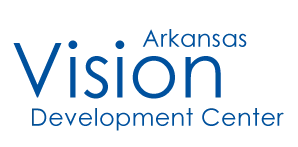Is your child struggling to adjust to new glasses? Try a few of these tips.
Read moreArticles
-
Getting Your Child Accustomed to New GlassesCategory: Newsletters
-
Daily Habits That May Be Harming Your Eye HealthCategory: Newsletters
Could any of these habits be hurting your eyes?
Read more -
Cold Weather and Your EyesCategory: Newsletters
Are your eyes dry and uncomfortable? The cold weather may be to blame.
Read more -
The Challenges of Night Driving and Your VisionCategory: Newsletters
Do you dread driving at night? Trying a few of these tips may make night driving less stressful.
Read more -
Diagnosing and Using Vision Technology to Help Low VisionCategory: Newsletters
Are you familiar with the symptoms of low vision?
Read more -
Are Your Eye Problems Genetic?Category: Newsletters
Have you been wondering if your eye problems are genetic?
Read more -
Common Eye Care MythsCategory: Newsletters
Do carrots improve your vision? Will sitting too close to the TV damage your eyes?
Read more -
Common Ocular EmergenciesCategory: Newsletters
Do you know when you should visit the eye doctor if you have eye pain?
Read more -
What Is a Stye and How Do You Treat Them?Category: Newsletters
Do you know what to do if you have a stye on your eyelid?
Read more -
The Causes and Treatments for AstigmatismCategory: Newsletters
Could you be one of the 33 percent of Americans who have astigmatism?
Read more -
Choosing the Best Lenses That Fit Your NeedsCategory: Newsletters
Do you need new glasses? Matching your lens to your lifestyle can improve your comfort.
Read more -
Symptoms, Causes, and Treatments of an Eye ColdCategory: Newsletters
Do you have red, itchy, watery eyes? You may have an eye cold.
Read more -
Tips to Relax Your EyesCategory: Newsletters
Improve your eye comfort with these simple exercises.
Read more -
May is Healthy Vision MonthCategory: Newsletters
Have you taken steps to protect your vision? May is Healthy Vision Month and it is the perfect time to start.
Read more -
Eye Twitches and Spasms and How to Stop ThemCategory: Newsletters
Do you wish your eyelids would stop twitching? These tips may help.
Read more -
How to Avoid Sunburned EyesCategory: Newsletters
Protect your eyes this summer with these important tips.
Read more
Our Normal Hours
AVDC Hours
Monday
8:00 am - 6:00 pm
Tuesday
8:00 am - 6:00 pm
Wednesday
8:00 am - 6:00 pm
Thursday
8:00 am - 6:00 pm
Friday
8:00 am - 6:00 pm
Saturday
Closed
Sunday
Closed
Location
Find us on the map
Arkansas Vision Development Center
1021 South Waldron Rd
Fort Smith, AR, US

